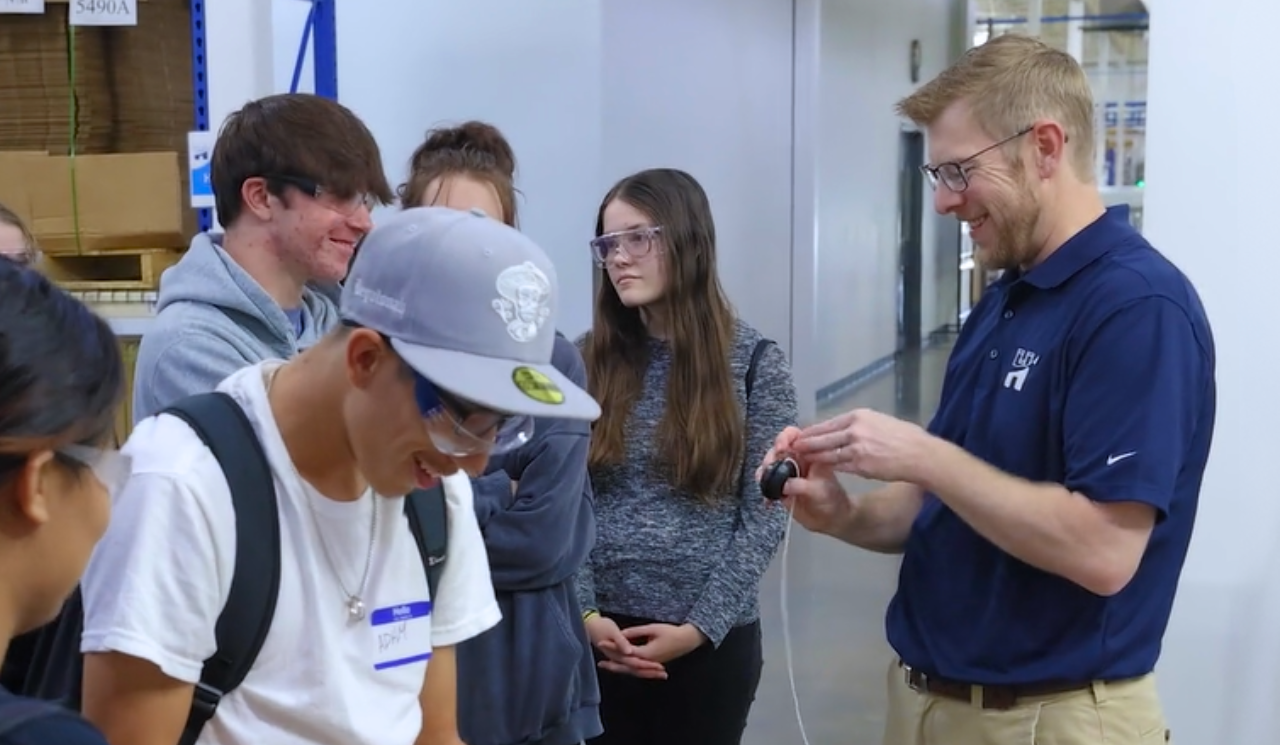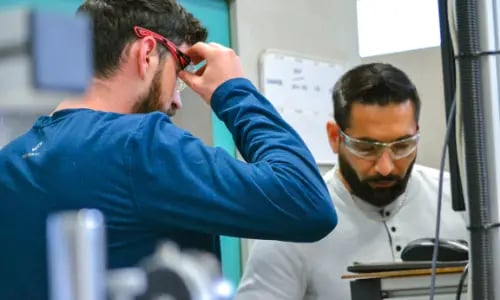October is Manufacturing Month, and all over the country, thousands of US-based manufacturers are celebrating Manufacturing Day – a day that’s dedicated to highlighting the importance of manufacturing on a local, national, and global scale. More specifically, Manufacturing Day is focused on our industry’s most pressing, relevant topic: workforce.
US manufacturing is growing strong, which is a huge win. Let’s consider some numbers from Deloitte’s latest manufacturing workforce report, done in partnership with the Manufacturing Institute:

These numbers are encouraging, but in some ways, it feels like a hollow victory when you consider the widening skills gap, aging workforce, and perception issues that currently characterize the manufacturing workforce.
Let’s dig into the workforce challenges a bit more, as this topic is complex and multifaceted.
On the one hand, we have an aging workforce, with leaders and industry veterans retiring without a sufficient bench to fill the void after they’re gone.
On the other hand, not enough young people are entering the industry, and millions of jobs are currently projected to go unfilled by 2030.
We also can’t forget about the trend that more technical, higher-level skills are going to be required for the future workforce, which will likely add to the existing skills gap.
In addition to skills, there’s a noticeable gap in applicants for open positions in manufacturing, with more workers needed for all roles, from the entry-level to skilled production to engineers.
These aren’t new challenges, although they become more nuanced each year, but the solutions that US manufacturers deploy in response to the workforce issue are worth discussing and always fair game for improvement.
Current Initiatives to Address Workforce Challenges
Hirsh Precision is not immune to the workforce challenges, and we feel the applicant and skills gaps most strongly.
These are some initiatives that we’ve put in place to address applicant sourcing, employee retention, and upskilling current and future team members.
Democratizing Tribal Knowledge
Eliminating tribal knowledge is a key area of developing our workforce. By making technical skills, internal processes, and best practices easily accessible to employees, we can democratize company knowledge. This results in shortening the learning curve and making the team more efficient by reducing the number of interruptions or "shoulder taps" that occur when someone doesn't know how to do something that another employee has experience doing.
One way we did that was by implementing a new learning management system (LMS). In addition to putting our “Hirsh curriculum” into one centralized, online hub, our learning content is organized by career pathways and onboarding journeys that will make onboarding and cross-training easier for employees.
The system is also designed to incentivize learners by using gamification and leaderboard modules to broadcast the learning milestones that team members are hitting and celebrate employees who are proactively learning or tackling subjects that go beyond what’s required to do their job.

Building Robust Talent Systems
Identifying opportunities to build robust systems around our recruitment, hiring, and onboarding processes was another important initiative for our team to combat workforce challenges.
Previously those processes had been disjointed across several incomplete systems and executed in silos, resulting in very slow, inefficient, clunky hiring practices that often “broke”.
In light of this, we designed our CRM and marketing platform to do the following:
- Serve as the central hub for all hiring information – including externally facing job posts, online applications, and applicant profiles – that all members of the hiring team have access t
- Host an interactive pipeline for all our applications where emails to the candidate, interviews, notes, and files can be consolidated and accessed by all stakeholders, as well as keep track of how many candidates we have at any given time and at what stage in the hiring process they’re in
- Trigger automated workflows such as onboarding emails to candidates, internal notifications for new hires, and task assignments
The result was one system streamlining, centralizing, and automating all recruitment processes: job creation, hiring, and onboarding. This in turn eliminated information silos, redundant conversations, manual and menial activities, and broken processes.
.png?width=1200&height=628&name=Blog%20Feature%20Images%20(6).png)
Investing in Organization and Individual Relationships
When it comes to addressing the skills and applicant gaps, systems and processes can only get you so far. Obviously, your company needs to be an attractive place to work, and retention strategies need to be in place. It’s important to note, though, that you need to be taking actionable steps to source your applicants long before they ever apply for a job opening.
Some of this is managed by using hiring platforms like Indeed and executing both organic and paid recruitment marketing campaigns to find desirable candidates. In addition to these activities, relationship-building is a crucial initiative for filling your applicant pipeline, and it’s very much a long-game strategy.
Relationship-building as a workforce development initiative happens at the macro and micro levels.
At the macro level, we are identifying organizations that align with our industry and unique hiring needs. This includes organizations in the public sector, community colleges, high schools, and after-school programs that deliver targeted learning opportunities to students who want to pursue manufacturing careers. Not only are we able to contribute thought leadership to their curriculum, but we’re also able to partner on career fairs, facility tours, work-based learning, and internship opportunities.
At the micro level, we look for the decision-makers at these organizations who will be the best advocates for partnering with our team. These are the instructors, program directors, and business liaisons. Strategically developing individual relationships also applies to our applicants. Regardless of whether or not an applicant advances to the next stage in the hiring process or receives an offer letter from us, every single candidate is going to receive attention from our team. We aim for every applicant to have a good experience with our team, even if we can't hire them immediately. Our goal is to positively interact, understand their interests, and maintain contact for future opportunities.
Because our industry’s workforce challenges won't disappear overnight, our team’s mindset is one of Continuous Improvement.
The recruitment machine is never complete.
Let's identify opportunities to improve the processes, systems, and initiatives that drive our applicant sourcing and hiring efforts.
We can always be more efficient, more automated, and more tailored.
We continue to hone our recruitment practices, even as we're seeing improvements to the workforce problem happen at the national level. Regardless of the factors that drive the current and future state of the manufacturing workforce, having strong systems and strategic initiatives will be essential for our team's success.




